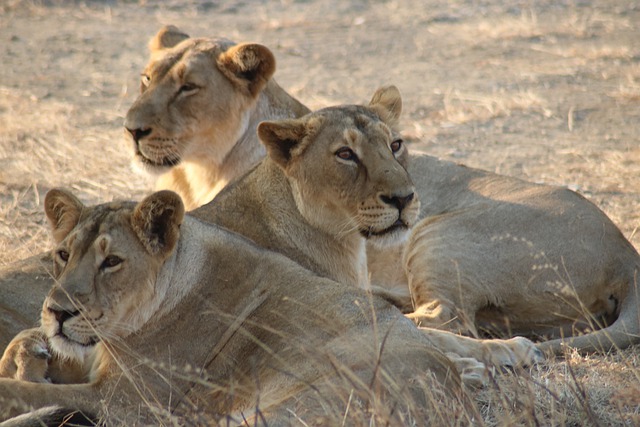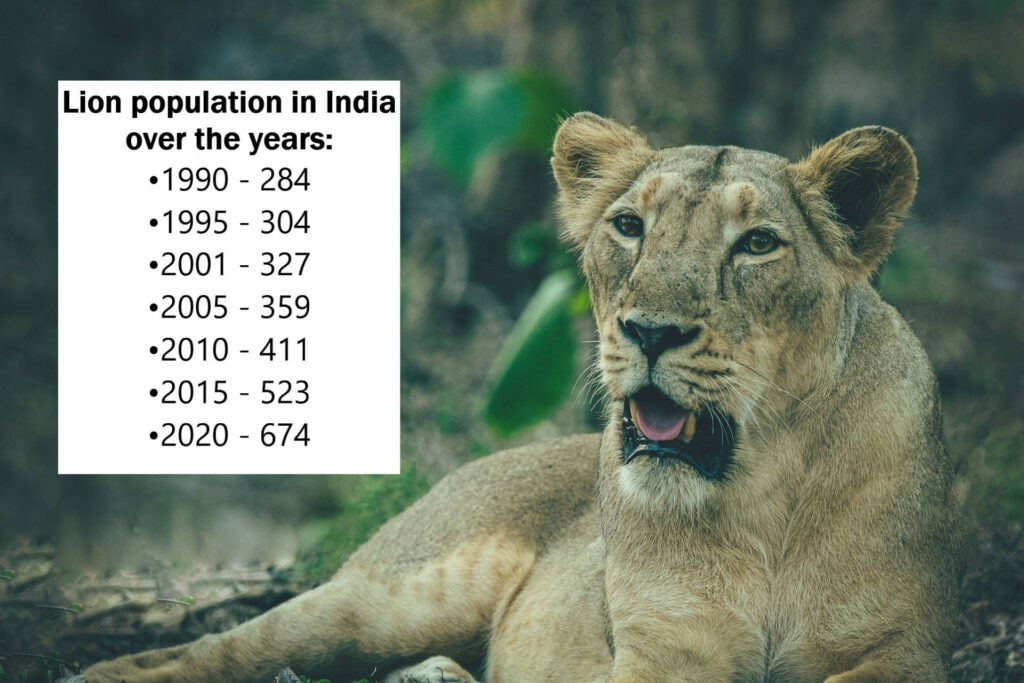Asiatic Lion as the name suggests is a Lion subspecies native to Asia. These lions are generally smaller in size as compared to most African Lions. Due to loss of habitat, hunting, and poaching, the Asiatic Lion population dropped to below 300 in the 20th century. Now the Asiatic Lion is found only in the Gujarat state of India in Gir National Park. The Lion population is slowly recovering thanks to the conservation efforts.

The Asiatic Lion is considered by many as the “Panthera leo leo” population (Panthera leo leo is the trinomial name of the Lion subspecies found in Northern Africa). However, it is listed under the name “Panthera leo persica” in the IUCN red list.
Size and appearance
For Asiatic lion, the typical weight range is 150-180 kg for males and 100-130 kg for females. The shoulder height is up to 120 centimeters for males and 105 centimeters for females. Male Asiatic lions have smaller less developed manes as compared with African Lions.
Historical range and current population
Historically Asiatic Lions were found in Arabia and other parts of the middle east, Northwestern Indian subcontinent, Iran, and other parts of India as well. Currently classified as “endangered”, the lion population in Gir National Park is 674 (2020). The population was 284 in 1990 and 523 in 2015. The wild area for the lions has also increased from just 6,600 sq km in 1990 to about 30,000 sq km in 2020.

Lion population in India over the years

| Year | Estimated lion population |
|---|---|
| 1990 | 284 |
| 1995 | 304 |
| 2001 | 327 |
| 2005 | 359 |
| 2010 | 411 |
| 2015 | 523 |
| 2020 | 674 |
Reintroduction of Asiatic Lion in Madhya Pradesh
There is a proposed plan for the reintroduction of the Asiatic Lions in Kuno National Park of Madhya Pradesh state. The plan is opposed by the Gujarat state and Madhya Pradesh has not received Lions as yet.
| Size | 150-180 kgs for males and 100-130 kgs for females |
| Range | Gir National Park |
| Biological name | Panthera leo leo/Panthera leo persica |
| Gestation Period | 100-119 days |
| Population | 694 (2020) |
Read more